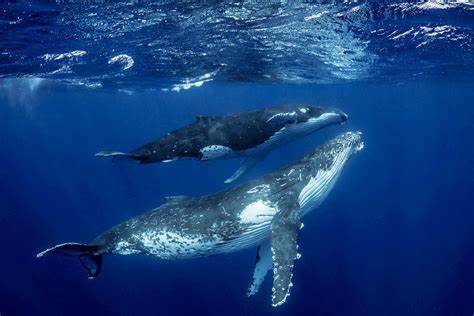Contact Us
Friday 12th August 2022 | Blog written by Matthew West, OiQ’s Route Planning Manager

Marine mammals, including whales, dolphins, seals and other groups are valuable both to society at large and for the ecosystem services they provide. They’re also among the marine species most susceptible to disturbance. Fortunately, cable-related operations are low-impact compared to other industries but it’s still necessary to analyse and compensate for potential disturbance where vulnerable marine mammal species reside.
OceanIQ regularly supports cable projects in the United Kingdom. The UK has a relatively robust protection structure for marine mammals, both from domestic legislation and held over from the EU acquis. It therefore provides a good case study of the measures to be taken to protect marine mammals, whilst minimising the effects on cable project costs and timelines.
For the UK, the relevant permit is a European Protected Species (EPS) license, giving the holder permission to disturb certain protected species for a specific activity, subject to conditions. To begin, an EPS Assessment is carried out for the project area, assessing the risks to EPS from:
Due to the slow speeds and transient nature of cable survey and installation operations, the visual disturbance and collision risk is minimal compared to the background level of vessel traffic around the UK and can be screened out at an early stage.
The most significant potential impact is from survey equipment, specifically multibeam echosounders, side-scan sonar, sub-bottom profilers (SBP) and USBL sonar sensors used to track subsea equipment. Of these, the SBP is typically the instrument of most concern as it is comparatively loud and low frequency, meaning that the sound carries further underwater. Despite this the impact is low as the sound is strongly oriented downward, minimising the geographic area affected. Whilst it varies depending on the specific piece equipment, for the most sensitive species (often harbour porpoise around the UK) the zone in which injury to hearing may occur due to peak intensity is up to a few hundred metres below the SBP, but only in a radius 5m around the SBP. Over a 24-hour period the distance equates to approximately 1,000-1,800m for permanent-transient effects. As this would require the animals to remain within this distance of the survey vessel conducting continuous survey for 24 hours, without moving away, the risk of injury is minimal.
The main impact from the installation operations is from the use of USBL. Similar to the above, this will not significantly affect marine mammal species despite being in their hearing range as effects will be transient and localised, as well as diluted by the ambient shipping noise.
For cable operations typically the only significant conditions of the EPS license are that:
These conditions have a negligible effect on operations whilst mitigating the impact on marine mammals, allowing OceanIQ to successfully complete projects and fulfil our environmental obligations at the same time.
Matthew is responsible for the production of Desk Top Studies, the commissioning and management of marine route surveys and the production and review of cable burial assessments. He has worked on projects including regional cable systems in Europe, Australasia, the Middle East and Asia as well as developments to trans-Atlantic cables.